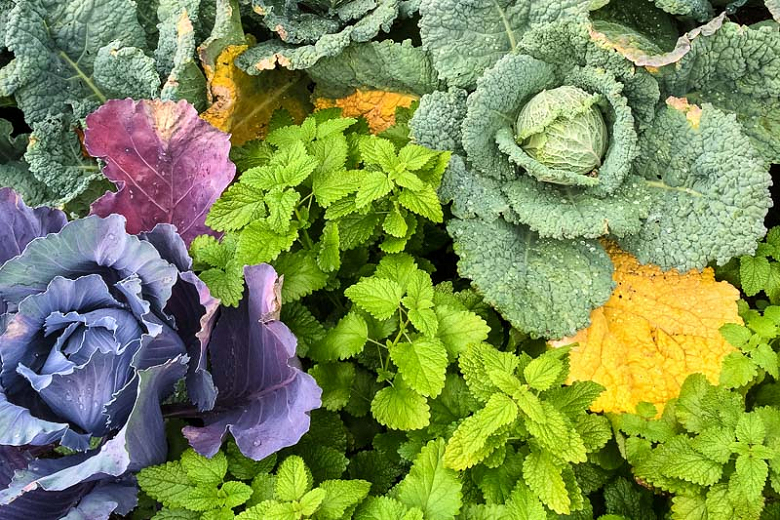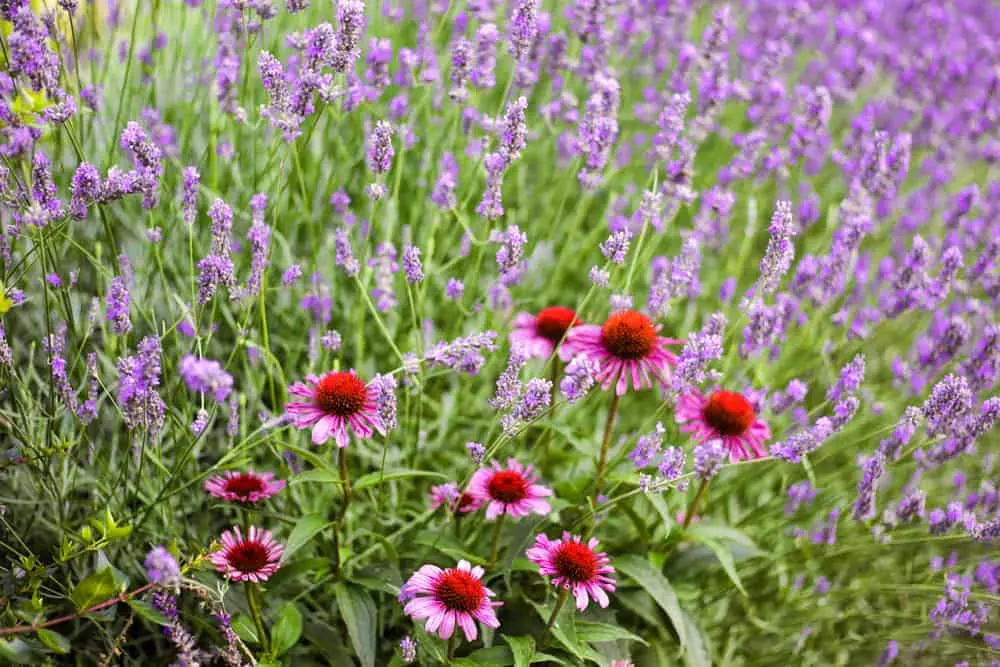The Ultimate Guide To Companion Planting With Mint
The Ultimate Guide to Companion Planting with Mint
Mint is a versatile herb that can be used in a variety of ways, from cooking to essential oils. It's also a great companion plant for other herbs and vegetables. In this guide, we'll discuss the benefits of companion planting with mint, as well as some of the best plants to pair with it.
Benefits of Companion Planting with Mint
There are many benefits to companion planting with mint. Here are a few of the most notable:
- Mint repels pests. The strong scent of mint can deter a variety of garden pests, including aphids, cabbage moths, carrot flies, mosquitoes, and slugs.
- Mint improves soil quality. Mint is a nitrogen-fixing plant, which means it adds nitrogen to the soil. This can help to improve the growth and health of other plants in your garden.
- Mint attracts pollinators. The flowers of mint are attractive to bees, butterflies, and other pollinators. This can help to improve the pollination of your crops, which can lead to a higher yield.
- Mint can mask the smell of other plants. If you have any plants that have a strong odor, such as garlic or onions, planting mint near them can help to mask the smell.
Best Plants to Pair with Mint
When choosing companion plants for mint, it's important to consider the size and growth habit of the plant. Mint is a fast-growing and invasive plant, so it's important to plant it with plants that can tolerate its aggressive nature. Some of the best plants to pair with mint include:
- Carrots. Mint helps to repel carrot flies, which can damage carrots.
- Tomatoes. Mint helps to improve the flavor of tomatoes and repels pests such as aphids.
- Beans. Mint helps to improve the nitrogen content of the soil, which can benefit beans.
- Cabbage. Mint helps to repel cabbage moths and other pests.
- Peas. Mint helps to repel aphids and other pests.
- Lettuce. Mint helps to repel slugs and snails.
- Squash. Mint helps to repel cucumber beetles and other pests.
- Roses. Mint helps to repel aphids and other pests.
- Stinging nettles. Stinging nettles help to strengthen the growth of mint and improve its flavor.
How to Plant Mint with Other Plants
When planting mint with other plants, it's important to give mint plenty of space to grow. Mint can spread quickly, so it's best to plant it in its own pot or raised bed. If you do plant mint in the ground, make sure to plant it at least 2 feet away from other plants.
You can also plant mint in containers with other herbs or vegetables. Just make sure that the container is large enough to accommodate the size of the mint plant.
Conclusion
Mint is a great companion plant for a variety of herbs and vegetables. By planting mint with other plants, you can help to repel pests, improve soil quality, attract pollinators, and mask the smell of other plants. With a little planning, you can create a thriving garden that benefits from the presence of mint.
Mint is a versatile herb that can be used in a variety of dishes, but it's also a great companion plant for other vegetables and herbs. The strong scent of mint can deter pests and attract beneficial insects, which can help to improve the health and productivity of your garden.
Some of the best companion plants for mint include:
- Carrots: The strong scent of mint can help to deter the carrot root fly, which is a common pest of carrots.
- Brassicas: Mint can help to repel cabbage moths and other pests that target brassicas.
- Peas and beans: Mint can help to attract pollinators, which are essential for the pollination of peas and beans.
- Tomatoes: Mint can help to repel aphids and other pests that target tomatoes.
- Marigolds: Marigolds and mint have complementary scents that can help to deter pests and attract beneficial insects.
If you're looking for more information about companion planting with mint, I recommend visiting Gardenia Inspiration. This website has a wealth of information on the topic, including a list of the best companion plants for mint, as well as tips on how to plant and care for mint in your garden.
FAQ of companion plant with mint
Q: What are some good companion plants for mint?
A: Mint is a versatile herb that can be paired with a variety of other plants. Some of the best companion plants for mint include:
- Carrots: The strong scent of mint helps deter the carrot root fly, a common pest of carrots.
- Brassicas: Mint can help repel cabbage moths, cabbage loopers, and other pests that target brassicas.
- Marigolds: Marigolds and mint both have strong scents that can help deter pests. They can also attract beneficial insects, such as ladybugs and lacewings, which help control pests.
- Onions: The strong scent of onions can help mask the scent of carrots, making them less attractive to carrot root flies.
- Peas and beans: Mint can help deter aphids and other pests that target peas and beans.
Q: What plants should not be planted near mint?
A: Mint is a vigorous grower that can quickly take over a garden. It is best to avoid planting mint near plants that are sensitive to its strong scent, such as strawberries and tomatoes. Mint should also not be planted near other herbs, as it can cross-pollinate with them and change their flavor.
Q: How can I keep mint from spreading?
A: Mint spreads by its underground rhizomes. To keep mint from spreading, it is best to plant it in a pot or raised bed. You can also put a barrier around the pot or bed to prevent the rhizomes from spreading.
Q: What are the benefits of companion planting with mint?
A: Companion planting is the practice of planting certain plants together to benefit each other. Mint can be a beneficial companion plant for a variety of other plants. For example, mint can help repel pests, attract beneficial insects, and improve the flavor of vegetables.
Q: How do I know if mint is a good companion plant for my garden?
A: There are a few things to consider when choosing companion plants for mint. First, you need to consider the size of the mint plant. Mint can be a very vigorous grower, so it is important to choose plants that will not be crowded out by mint. Second, you need to consider the needs of the other plants in your garden. Mint does not like to compete for water or nutrients, so you need to make sure that the other plants in your garden have different water and nutrient needs. Finally, you need to consider the pests and diseases that are common in your area. Mint can help repel some pests, but it can also attract others. You need to make sure that the other plants in your garden are not susceptible to pests that are attracted to mint.
Image of companion plant with mint
- Mint and tomatoes. Mint's strong aroma will keep pests away from tomatoes.

- Mint and carrots. Mint can help to repel carrot flies and other pests.

- Mint and beans. Mint can help to improve the nitrogen content of the soil, which is beneficial for beans.

- Mint and cabbage. Mint can help to repel cabbage moths and other pests.

- Mint and lavender. Mint and lavender can both help to repel pests, and they also look great together in a garden.

Post a Comment for "The Ultimate Guide To Companion Planting With Mint"